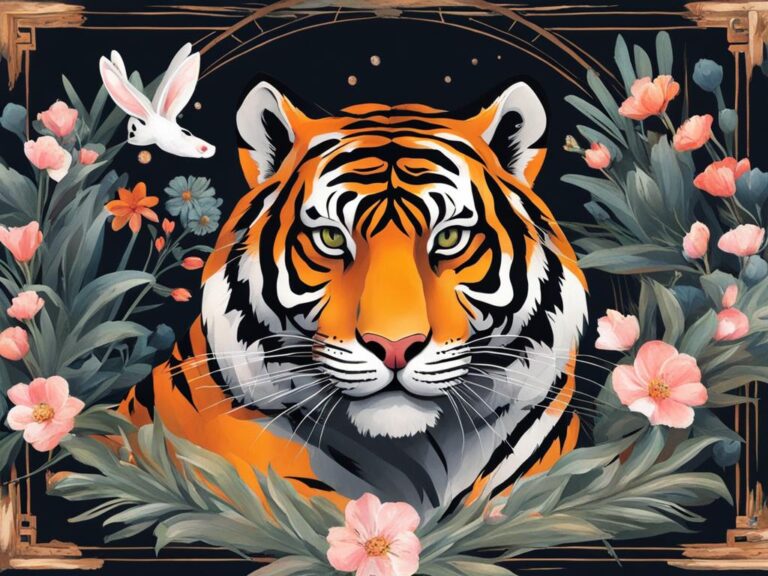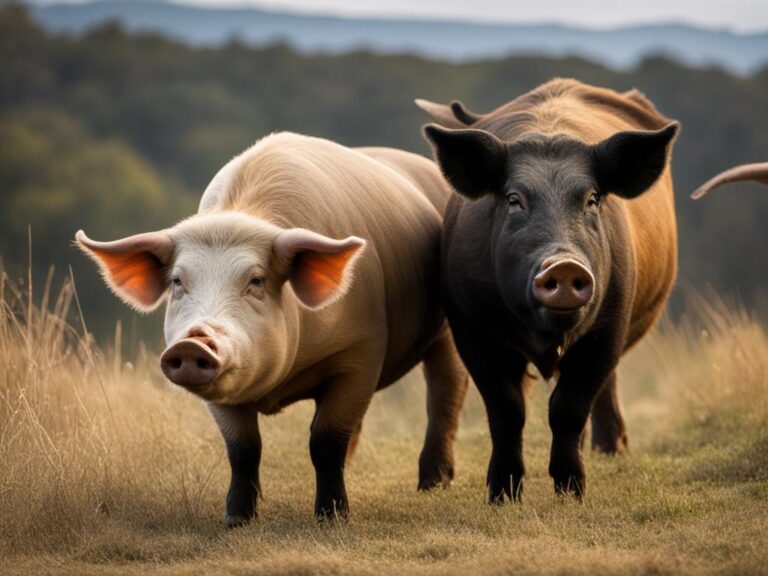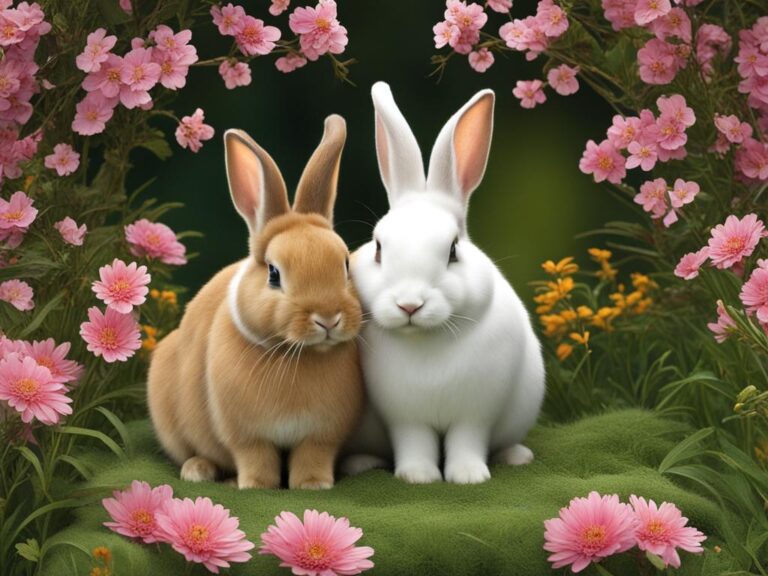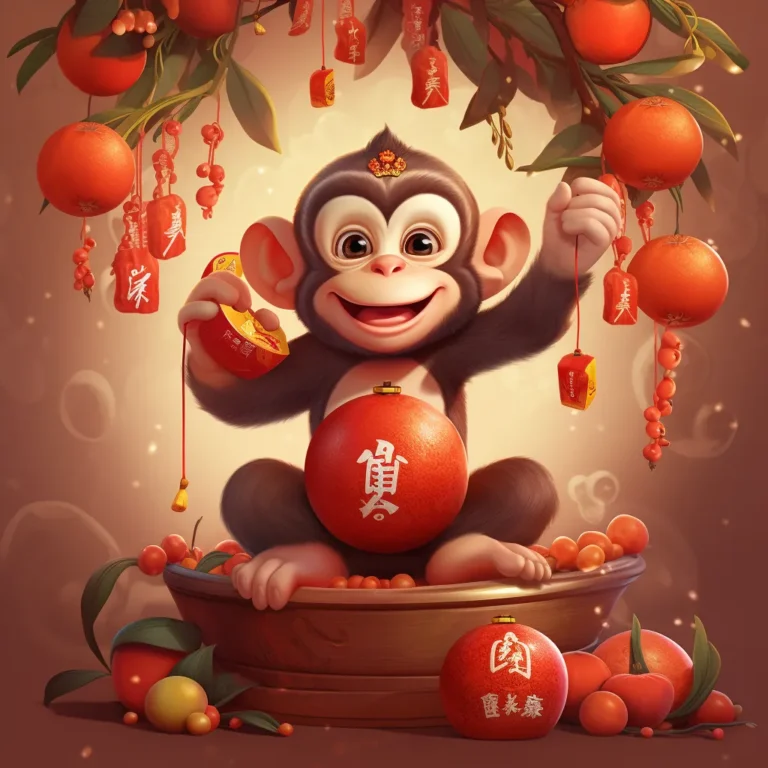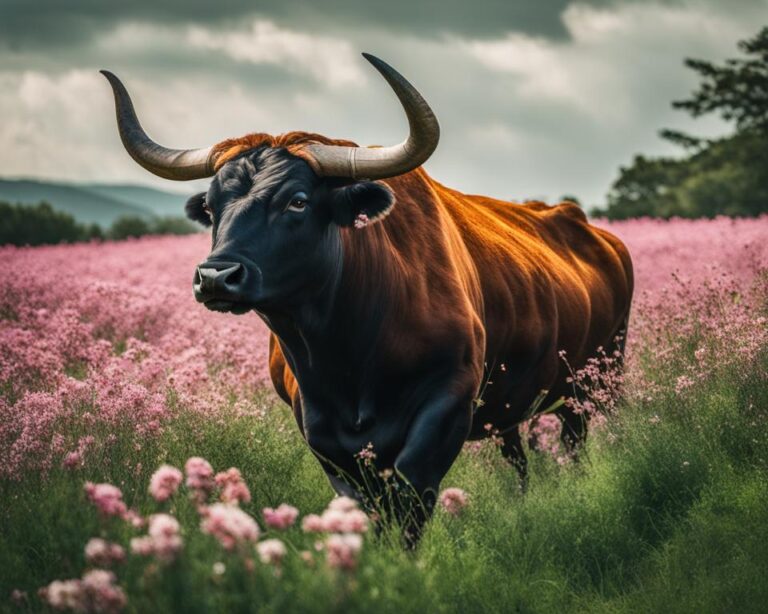Welcome to a journey that uncovers the profound harmony between the Tiger and Rabbit – two iconic symbols deeply rooted in Korean art and Chinese astrology. This exploration dives into the intricate dance of yin and yang balance, uncovering the complementary qualities and inherent beauty within this dynamic relationship. Embark on this inspiring adventure as we delve into the significance of tiger and rabbit compatibility, the harmony between these two creatures, and the timeless concept of balanced harmony.
Key Takeaways:
- The Tiger and Rabbit hold significant symbolism in Korean art and Chinese astrology.
- The yin and yang balance between the Tiger and Rabbit represents harmony.
- Individuals born under these zodiac signs possess complementary traits.
- The Tiger represents strength and assertiveness, while the Rabbit embodies gentleness and intuition.
- The harmony of the Tiger and Rabbit extends to various aspects of Chinese culture.
- Harmony is achieved when opposing forces, like yin and yang, find equilibrium.
- The Tiger and Rabbit inspire unity, cooperation, and mutual understanding.
The Symbolism of the Tiger and Rabbit in Korean Art
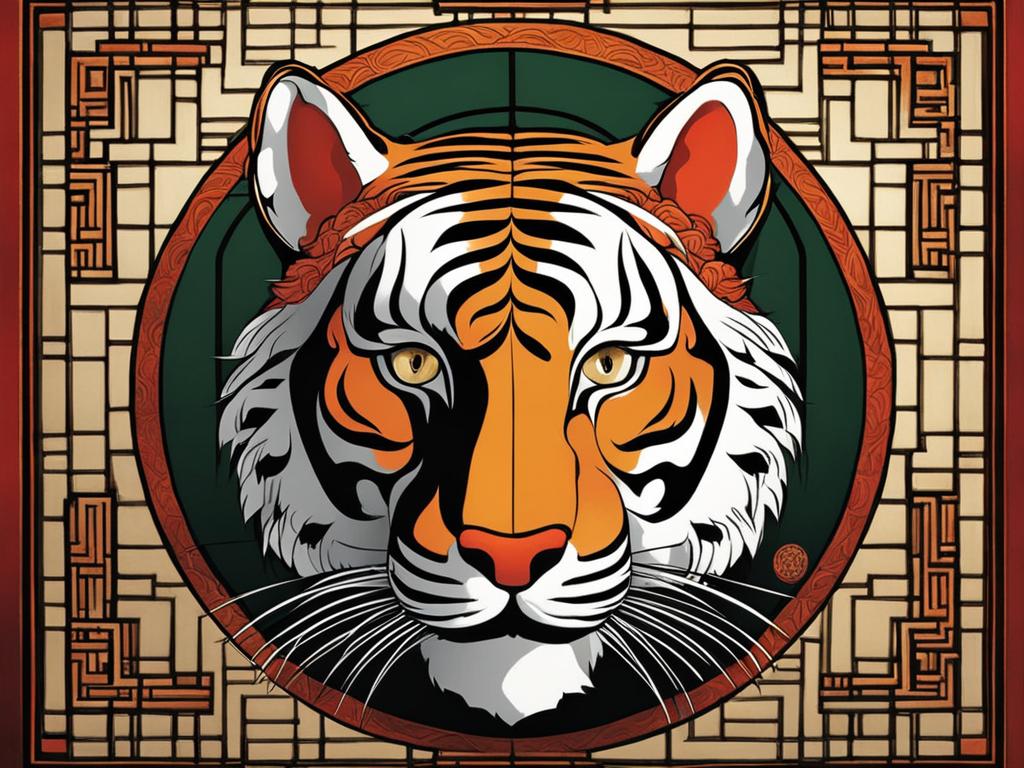
Korean artwork is rich in symbolism and often incorporates animals as important elements. Among these, the Tiger and Rabbit hold significant meaning and are frequently depicted in various art forms, including traditional Korean folk paintings. These artistic representations convey deep cultural and spiritual connotations, offering insights into the harmony and balance revered in Korean culture.
The Tiger, known as “Horangi” in Korean, is a symbol of courage, strength, and protection against evil spirits. It has long been associated with good luck and embodies traits that evoke national pride. In Korean folklore, the Tiger often appears alongside the Magpie and the Rabbit, creating delightful narratives that celebrate the synergy between these creatures.
“The Tiger’s presence in Korean artwork reflects its significance in the nation’s mythology and cultural identity. It represents bravery and serves as a powerful protector against malevolent forces,” says renowned Korean art historian, Dr. Ji-yoon Kim.
The Magpie, considered a bearer of good news and a symbol of happiness, is commonly depicted alongside the Tiger. This pairing represents the harmonious union of strength and good fortune. Additionally, folk tales often highlight the wit and cleverness of the Rabbit, emphasizing its ability to outsmart the mighty Tiger.
Korean art beautifully captures the symbolism of the Tiger and Rabbit, showcasing their cultural significance and the profound connection between nature and human life. These artistic expressions serve as a window into the values cherished by the Korean people, celebrating the balance and harmony found in the presence of these iconic animals.
| Tiger Symbolism | Rabbit Symbolism |
|---|---|
| Courage | Intuition |
| Strength | Kindness |
| Protection | Diplomacy |
The Yin and Yang Balance between Tiger and Rabbit
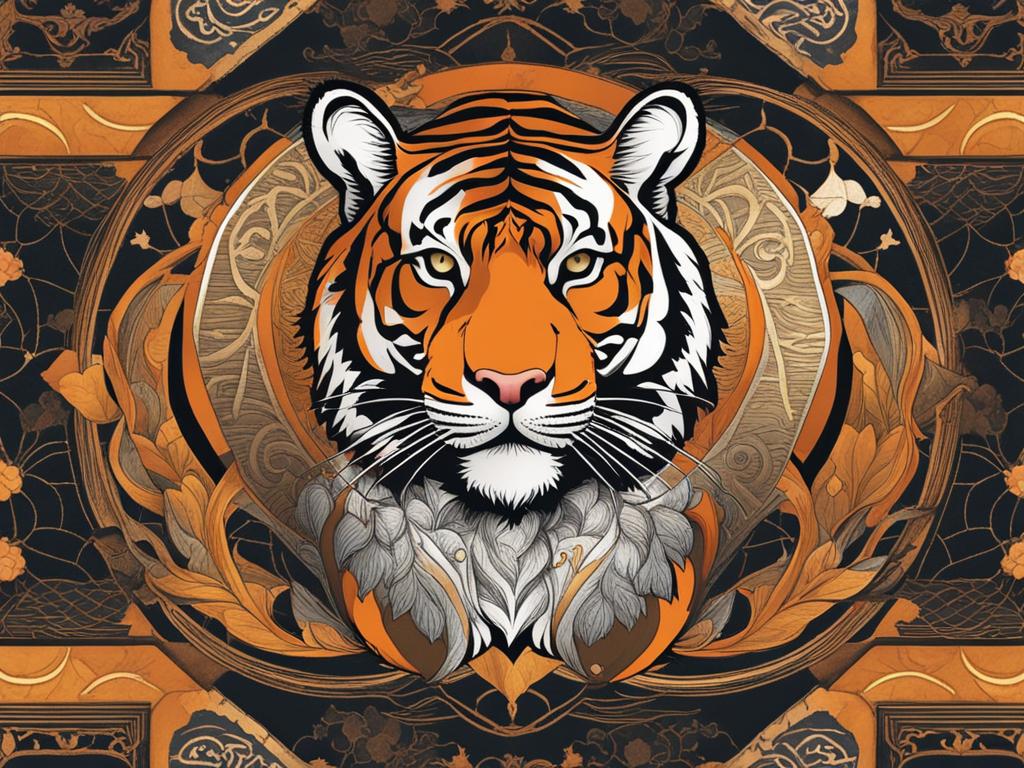
In Chinese astrology, the relationship between the Tiger and the Rabbit is one that exemplifies the concept of balanced harmony. The Tiger, representing strength and assertiveness, and the Rabbit, symbolizing gentleness and intuition, complement each other to create a harmonious partnership. This balance is rooted in the concept of yin and yang, where opposing forces come together to create equilibrium.
The Tiger and Rabbit relationship is characterized by a unique blend of qualities. The Tiger’s courage and passion are tempered by the Rabbit’s kindness and sensitivity. The Tiger’s natural leadership abilities are complemented by the Rabbit’s diplomatic nature. Together, they have the potential to create a harmonious dynamic that combines strength and gentleness, assertiveness and intuition.
Chinese zodiac compatibility recognizes the complementary traits of the Tiger and the Rabbit. Their shared love for harmony and balance can lead to a deep understanding and respect for each other’s strengths and weaknesses. The Tiger’s assertiveness can provide support and protection for the Rabbit, while the Rabbit’s gentle nature can bring a sense of peace and balance to the Tiger’s fiery energy.
To illustrate the balanced harmony between the Tiger and the Rabbit in Chinese astrology, we can look at their respective representations in the yin and yang symbol. The Tiger, associated with yang energy, represents the active, masculine force, while the Rabbit, associated with yin energy, represents the passive, feminine force. Together, they form a complete whole, embodying the harmonious balance of yin and yang.
| Tiger | Rabbit |
|---|---|
| Courageous | Kind |
| Assertive | Sensitive |
| Passionate | Diplomatic |
| Leader | Intuitive |
In conclusion, the Tiger and Rabbit relationship in Chinese astrology is a testament to the power of balanced harmony. Their complementary traits and shared love for harmony create a partnership that combines strength and gentleness, assertiveness and intuition. By embracing the yin and yang balance between them, individuals born under these zodiac signs can cultivate a relationship based on mutual understanding, respect, and a deep connection.
The Personal Traits of Tiger and Rabbit Individuals
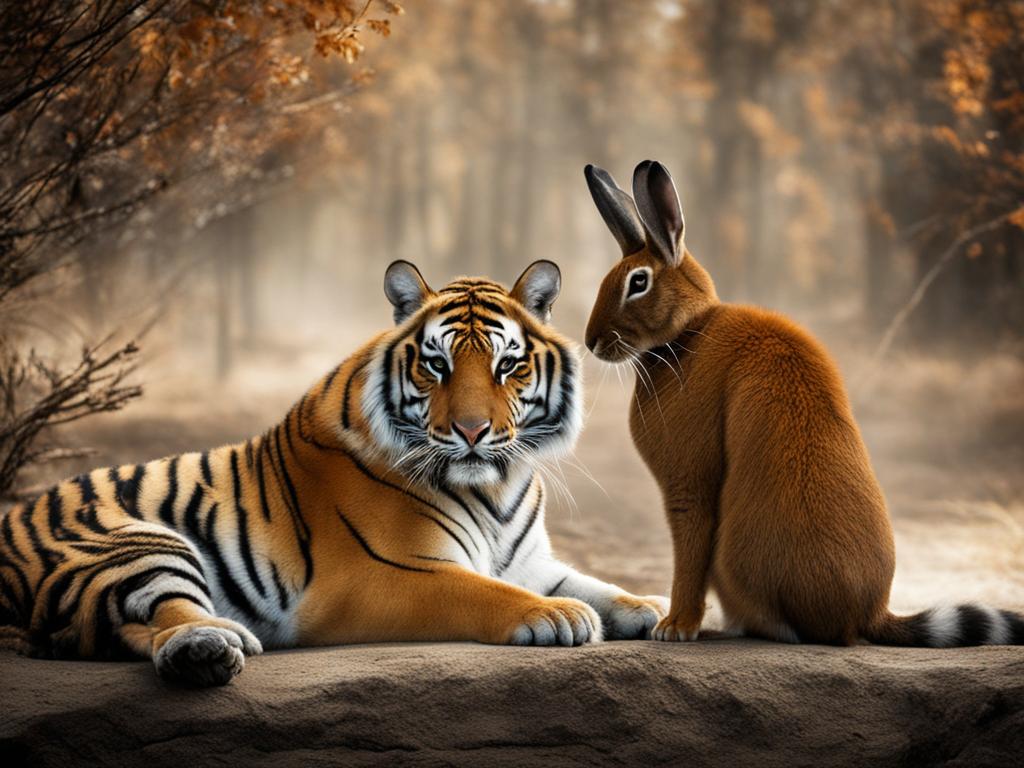
Individuals born under the Tiger and Rabbit zodiac signs possess distinct personality traits that contribute to their unique and harmonious relationship. The Tiger, symbolizing strength and assertiveness, is known for its courageous nature and natural leadership abilities. Tigers are passionate individuals who approach life with vigor and determination, never shying away from challenges or taking risks.
In contrast, those born under the Rabbit sign possess a gentle and sensitive nature. They are kind-hearted individuals who value harmony and peace in their relationships. The Rabbit is known for its diplomatic skills, always seeking to find common ground and resolve conflicts through understanding and empathy.
While Tigers exude confidence and dominance, Rabbits provide a sense of calm and stability. Their complementary traits make them a perfect match, as Tigers can benefit from the Rabbit’s calming presence, while Rabbits can draw strength and inspiration from the Tiger’s assertiveness and drive.
Their traits can be summarized as follows:
- Tiger individuals: courageous, passionate, assertive, and natural leaders
- Rabbit individuals: kind-hearted, sensitive, diplomatic, and peace-seeking
The harmonious partnership between Tigers and Rabbits is rooted in their ability to balance each other’s strengths and weaknesses. Tigers can learn from the Rabbit’s gentle approach, cultivating patience and empathy. On the other hand, Rabbits can draw upon the Tiger’s confidence and determination, embracing their own assertiveness when necessary.
Together, Tigers and Rabbits create a harmonious union that blends strength, passion, gentleness, and diplomacy. Their shared values of courage, kindness, and a desire for balance contribute to a relationship that is not only fulfilling but also capable of weathering life’s challenges with grace and resilience.
| Personality Traits | Tiger | Rabbit |
|---|---|---|
| Strengths | Courageous | Kind-hearted |
| Leadership Style | Natural leaders | Diplomatic |
| Approach to Challenges | Vigorous and determined | Embraces harmony |
| Emotional Nature | Passionate | Sensitive |
| Communication Style | Assertive | Pacific |
In summary, Tigers and Rabbits possess distinct personality traits that contribute to a balanced and harmonious relationship. While Tigers embody strength and assertiveness, Rabbits bring kindness and diplomacy to the partnership. Together, they create a union that blends courage, passion, gentleness, and empathy, making them a perfect match for a long-lasting and fulfilling relationship.
The Harmony of Tiger and Rabbit in Chinese Culture
The integration of the Tiger and Rabbit symbolism in various aspects of Chinese culture showcases the deep-rooted belief in the importance of harmony and balance. These two animal signs, representing strength and gentleness respectively, embody the yin and yang forces that are integral to Chinese astrology and philosophy.
In Chinese culture, the Tiger is revered for its power, courage, and fierce protection against evil spirits. It is considered a symbol of vitality and strength. On the other hand, the Rabbit is associated with kindness, sensitivity, and diplomacy. Together, they create a harmonious union that exemplifies the ideal balance between contrasting qualities.
“The harmony between Tiger and Rabbit is a testament to the Chinese belief that balance and cooperation are essential for a prosperous and peaceful society.”
Beyond astrology, the Tiger and Rabbit also feature prominently in Chinese art, literature, and folklore. Paintings often depict the Tiger and Rabbit together, symbolizing unity, cooperation, and mutual understanding. Their relationship represents the ability to overcome differences and find common ground, promoting harmony in all aspects of life.
| Tiger | Rabbit |
|---|---|
| Strength and assertiveness | Gentleness and intuition |
| Courage and leadership | Kindness and diplomacy |
| Protection against evil spirits | Sensitive and compassionate |
The union of the Tiger and Rabbit in Chinese culture serves as a powerful reminder of the importance of finding harmony amidst diversity. It emphasizes the value of cooperation and understanding in creating a balanced and prosperous society.
The Cultural Significance
The integration of the Tiger and Rabbit symbolism in various aspects of Chinese culture, including art, literature, and folklore, highlights their cultural significance. This integration promotes unity, cooperation, and mutual understanding, fostering harmony in Chinese society.
The harmony between Tiger and Rabbit serves as an inspiration for individuals as well, encouraging them to cultivate balanced relationships and embrace the strengths and qualities of others. By understanding and appreciating the complementary nature of diverse perspectives, individuals can thrive in their personal and professional lives, contributing to a harmonious society.
Exploring the Concept of Balanced Harmony
The concept of balanced harmony holds profound significance across various cultural and philosophical traditions. It is rooted in the understanding that true harmony is achieved when opposing forces find equilibrium, resulting in a state of balance and unity. This notion extends beyond the realms of personal relationships and societal coexistence, encompassing the natural world as well.
In nature, we witness how harmony manifests through the delicate interplay of diverse elements. From the ebb and flow of the tides to the harmonious melodies of a symphony created by different instruments, balance permeates every facet of existence. Achieving harmony in our own lives requires a similar recognition of the interconnectedness and interdependence of all things.
When we actively strive for balanced harmony in our relationships, we foster an environment that encourages growth, understanding, and mutual respect. By recognizing and embracing both our strengths and weaknesses, we can complement and support one another. This harmonious interplay lays the foundation for deep connections and a sense of shared purpose.
As we navigate the complexities of life, it is crucial to remember that achieving harmony is an ongoing process. It requires patience, self-awareness, and a willingness to adapt and adjust. By cultivating an attitude of openness, empathy, and acceptance, we can create a harmonious existence not only within ourselves but also with those around us. When we embrace the concept of balanced harmony, we embark on a transformative journey towards a more fulfilling and meaningful life.
Conclusion
The harmony between the Tiger and Rabbit is a captivating expression of balanced harmony, exploring the beauty and significance of their symbiotic relationship. In Korean art, the Tiger holds a revered place, symbolizing courage, protection against evil spirits, and national pride. The inclusion of the Magpie and Rabbit alongside the Tiger in Korean folk paintings further highlights the interconnectedness of these animal signs.
In Chinese astrology, the Tiger and Rabbit embody the concept of yin and yang balance. The Tiger represents strength and assertiveness, while the Rabbit brings gentleness and intuition to the partnership. Individuals born under these zodiac signs have the potential to create a harmonious alliance, leveraging their complementary traits to build a balanced relationship.
Throughout various aspects of Chinese culture, the Tiger and Rabbit symbolize harmony and unity. From art and literature to folklore, their integration promotes cooperation, understanding, and a sense of togetherness. It serves as a powerful reminder that harmony is a vital ingredient in personal relationships and broader society.
By exploring the harmony of Tiger and Rabbit, we discover a profound understanding that true balance is achieved when opposing forces come together in equilibrium. This principle extends beyond the realm of astrology and permeates all aspects of life. May we draw inspiration from the harmonious union of the Tiger and Rabbit as we strive to cultivate balanced partnerships, embrace diversity, and coexist harmoniously with nature and one another.
FAQ
What is the significance of the Tiger and Rabbit in Korean art?
The Tiger and Rabbit hold great significance in Korean artwork, representing national pride, courage, and protection against evil spirits. They are frequently depicted in Korean folk paintings alongside the Magpie.
How are the Tiger and Rabbit portrayed in Korean folklore?
In Korean folklore, the Rabbit is known for outsmarting the Tiger, showcasing the Rabbit’s cleverness and wit. The Tiger, on the other hand, symbolizes strength and leadership.
What is the relationship between the Tiger and Rabbit in Chinese astrology?
The Tiger and Rabbit are seen as complementary signs in Chinese astrology, representing the balance of yin and yang. The Tiger embodies strength and assertiveness, while the Rabbit symbolizes gentleness and intuition.
What are the personality traits associated with individuals born under the Tiger and Rabbit zodiac signs?
Tigers are known for their courage, passion, and leadership abilities, while Rabbits are characterized by their kindness, sensitivity, and diplomatic nature.
How are the Tiger and Rabbit integrated into Chinese culture?
The Tiger and Rabbit symbolism is prevalent in various aspects of Chinese culture, including art, literature, and folklore. Their representation promotes unity, cooperation, and mutual understanding.
What is the concept of balanced harmony?
Balanced harmony is a universal concept found in various cultural and philosophical traditions. It emphasizes the equilibrium of opposing forces, such as yin and yang, to achieve harmony in personal relationships, societal coexistence, and the natural world.

